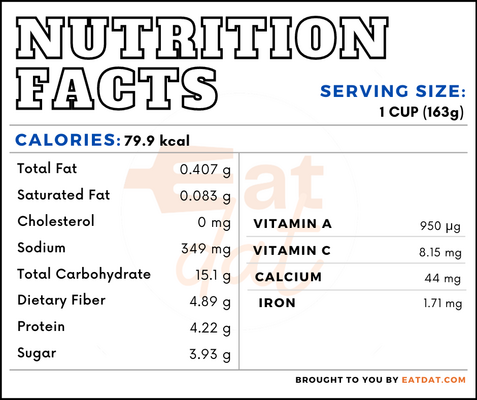
Vegetables
What are Vegetables?
Vegetables are the edible part of a plant that can be consumed by humans or animals. This can include the roots, stalks, stems, seeds, or flower parts of a plant. This food tends to be eaten in savory dishes, but some can also be used in sweet dishes.
- In the US, the average per capita intake of vegetables is 310 grams a day.
- Americans mostly commonly eat potatoes and tomatoes over any other type.
The top 10 most popular vegetables, according to the Produce Marketing Association are:
- Potatoes
- Tomatoes
- Onions
- Carrots
- Broccoli
- Bell Peppers
- Lettuce
- Cucumbers
- Celery
- Salad Mix
Origin of vegetables
As many plants were considered poisonous at the beginning of time, all plants, including vegetables, were thought of as dangerous. Still, humans began cultivating their food between 8,000 to 9,000 BC, according to archeological evidence. This early cultivation happened in the area around the Mediterranean Sea where early people had access to both fertile land and water. However, in South America, evidence shows that maize was cultivated sometime between 10,000 and 6,000 years ago. What is certain is that the early vegetable is a far cry from the food we know today.
Domesticating these plants changed their appearance, genetics, and food yield. The Romans, in particular, were responsible for much of the growth and development. As trade routes expanded, horticulture advanced and vegetable were transported to more parts of the world. These foods would eventually make their way to the New World around the 15th century to continue the evolution of these foods. Today, modern vegetables are radically different from their ancient ancestors, yet continue to hold an important place in culinary culture.
Nutrition
One cup (163g) of mixed, canned vegetables:

While the nutritional values for each vegetable are different, they are considered to be healthy foods overall. Some may have more vitamins and minerals, although they are all low-fat and low-calorie foods. These foods also contain fiber and folate (folic acid) which help create a balanced diet. A vegetable can provide many health benefits such as reducing the risk of heart disease and protecting against cancer. The USDA recommends making half your plate to take advantage of their nutrition and benefits.
Commercial Production
The commercial production varies depending on each variety. Different varieties have to be planted and grown during different parts of the year to ensure that the environment is suitable. Generally speaking, farmers begin the process by acquiring the right seeds. Modern-day farmers can breed or select seeds that improve the size, yield flavor, and other aspects of this food. Seeds are planted during the season that is best for the plant, watered regularly, and fed with fertilizer.
Some plants grow above ground and others grow below ground, so sunlight levels also vary. These plants can grow anywhere from 3-6 months. Achieving the correct level of humidity is vital to growing vegetables so some plants may grow in a greenhouse or under bands of plastic. One the plant has reached the right size, it can be picked, inspected, and stored in a refrigerated warehouse. Although most are sent off to stores and markets straight away, some are kept behind to build up a stock for later in the year.
Uses
Since there are so many different types, it’s no surprise that each one has to be stored differently. All veggies should be kept in a cool, dry, dark place as that keeps them from going bad quickly. Onions, shallots, garlic, hard squash, and potatoes fare better in the pantry. One the other hand, foods with a shorter lifespan like asparagus, eggplant, broccoli, leafy greens, and carrots need to be refrigerated.
Furthermore, mushrooms stay freshest when stored in a paper bag inside the refrigerator. Each kind of vegetable has a different shelf life, so it’s recommendable to do some research. Also, these foods will last longer when stored away from fruits. Fruits can speed up the ripening phase which can lead to nearby foods going bad faster.
Vegetable recipes
A vegetables can add flavor, color, and texture to any dish. Here are some popular recipes.
FDA Regulation
The Food & Drug Administration has very specific regulations regarding the production of this to minimize microbial food safety hazards. Both domestic and international producers of this food music adhere to this regulation which addresses cleanliness, quality control, and best practices. Fresh foods that are cut also have a separate regulation that addresses production, sanitation, and operations which are approved by the FDA. These production standards aim to reduce the amount of food borne illness in the United States.
References
Black, Kenneth. “The History of Fruits & Vegetables.” Gardenguides.com, Garden Guides, 20 July 2020, www.gardenguides.com/82843-history-fruits-vegetables.html.
Jitchotvisut, Janaki. “The Fascinating Origins of 14 Popular Vegetables.” Insider.com, Insider, 26 Oct. 2018, www.insider.com/where-did-the-first-vegetables-come-from-2018-9.
“Vegetables:Nutrients and Health Benefits.” ChooseMyPlate.gov, Choose My Plate, www.choosemyplate.gov/eathealthy/vegetables/vegetables-nutrients-health.
“Guide to Minimize Microbial Hazards for Fresh Fruits and Vegetables.” U.S. Food and Drug Administration, FDA, 1 Oct. 1998, www.fda.gov/regulatory-information/search-fda-guidance-documents/guidance-industry-guide-minimize-microbial-food-safety-hazards-fresh-fruits-and-vegetables.
